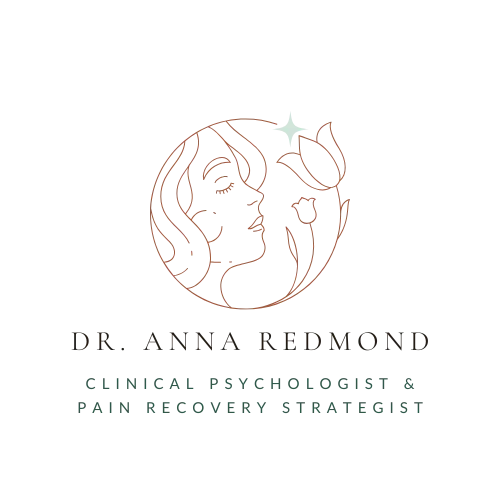Connect with me!
Tell me the number one thing that you want to understand about your pain?

Discover the root of your pain.
The journey of chronic pain can begin at different times for different people.
For some, it begins at the onset of an injury. Perhaps chronic pain started in adulthood during a particularly stressful phase of life. For others, it started early in life, maybe even as far back as childhood. Those that can identify pain starting in childhood may recall traumatic or difficult experiences, potentially scary health experiences. Regardless of when you can identify the onset of your symptoms, they are real, valid, and unique to you.
Those that can identify chronic pain symptoms beginning in childhood may also be able to point to difficult childhood experiences. Our nervous systems are learning, in childhood, to detect danger and protect us. When there are experiences in childhood that feel physically or emotionally unsafe, our brain jumps quickly into protective mode.
When the brain is learning over and over to keep this protective mode “on”, it learns to stay that way and becomes increasingly sensitive and more protective over time.
Children find different ways to reduce conflict, avoid physical suffering, and experiences or sensations that feel emotionally unsafe. One of the ways that children do this is by trying to behave perfectly. We see this attempt at behaving perfectly lead, especially with women, to unhealthy levels of perfectionism and people-pleasing.
This response also leads to a general coping pattern of avoidance. While it allows them to maintain relationships, avoid conflict, and adapt to difficult experiences around them, in the long term it does them a disservice because their bodies remain in an ongoing state of tension. In addition, their nervous systems remain hypervigilant, overprotective, and sensitive as a result.
Beyond childhood trauma or difficult experiences, some may experience traumatic or scary health experiences in childhood, including surgeries, diagnostic tests, incorrect diagnoses, or injuries. With these experiences, it is possible to see worst-case scenario thinking, increased activation of the emotional centers of our brain, and a general sensitivity to life events and stimuli surface.
Fast forward to adulthood, where we not only have to grapple with the childhood experiences that build our foundation, but the everyday stresses of adult life.
If nervous system sensitivity already exists, it can be exacerbated by the chronic stress of adulthood.
This chronic stress and oversensitivity often manifests as physical symptoms, commonly: migraines or headaches, fatigue, irritable bowel symptoms, chronic muscle tension, rapid heart rate, insomnia and others.
Many people can, in hindsight, point to their symptom onset coinciding with major life events such as moving, job or career change, becoming a parent, going back to school, change in financial status, loss of a loved one, abusive relationships, housing issues, discrimination, for example.
Unfortunately, the nervous system can only stay “turned on” for so long before it gets burned out. This is where we see a cycle of chronic symptoms, particularly pain, set in. These symptoms can show up as common diagnoses, including:
chronic regional pain syndrome
back or neck pain
fibromyagia or musculoskeletal pain
migraines or tension headaches
fatigue, leg pain or knee pain
hand or arm pain
trigeminal neuralgia
irritable bowel syndrome and other GI complaints
general lingering of physical symptoms.
Why does this happen? The nervous system is designed to learn and pick up habits easily. From an evolutionary perspective, this is to protect us.
The more that your nervous system practices activating a response, such as pain, the better it gets at it, and less is required to trigger it.
Over time, that physical symptom can be activated again and again, with the window of tolerance becoming smaller and smaller. Brain changes occur and, with the oversensitivity, the nervous system’s overprotectiveness becomes a faulty alarm, triggering a pain response even when there is no actual danger present.
Here is how the cycle is maintained (commonly and easily!): Chronic pain triggers avoidance of things that hurt, which can include physical activity, social activities, sexual/relationship activities, hobbies, daily routine, daily hygiene.
Chronic pain can start to interfere not only with tasks that are part of normal daily life, but with the pieces of our life that make up who we are, our identity. This part of the cycle comes with a lot of loss and grief – usually resulting in negative emotions such as anxiety, depression, fear, frustration, and helplessness. We also often start to see negative or unhelpful thinking contribute to these moods.
These changes to daily life and the coinciding brain changes fuel the fire of chronic pain. Activities that release “happy” chemicals become inhibited, while hypervigilance and fear responses become more of the norm.
Pain, while it feels like it lives in your body, is constructed by the brain. Pain is 100% physical and emotional at the same time.
In fact, the brain at least partially processes pain using the area of the brain that also processes fear and other protective emotions. The good news is that there is a more rational part of the brain, or prefrontal cortex, that can get more involved and dial down the fear, helping people break from the cycle (or avoid re-entering it).
One way to involve your prefrontal cortex is to understand the biology and neuroscience of how pain actually works, how your journey to pain came to be, and your unique factors that fuel the fire.
When we KNOW pain, understand how it works, and understand how our nervous system came to feel unsafe, we can overcome chronic pain.
We call this targeted rewiring: It isn’t a magic wand, but with learning, openness to experience, and consistent practice, we can actually change how our brain and nervous system responds to pain.
Ready to grab this critical education and elevate your journey towards a pain-free, empowered life?
Join my exclusive Facebook group, Breaking Through Pain | An Oasis for High Achieving Women. As a valued member of my weekly newsletter community, you're invited to dive deeper into a supportive space crafted just for you. Access insider resources like freebies and live trainings, connect with like-minded individuals, and discover the holistic approach of the Pain Recovery Trifecta.
Don't miss out on this complimentary opportunity to reclaim sustained productivity and break free from the limitations of chronic pain.
Click HERE to join the empowering conversation now!.
BACK PAINCAN MENOPAUSE CAUSE PAINCAN FEMALES HANDLE MORE PAINCHRONIC PAINCHRONIC PAIN DEFINITIONCHRONIC PAIN CYCLECHRONIC PAIN HELPCHRONIC PAIN JOINTSCHRONIC PAIN NECK AND BACKCHRONIC PAIN RELIEFCHRONIC PAIN RESOURCESCHRONIC PAIN SUPPORTCHRONIC PAIN SYMPTOMSCHRONIC PAIN SYNDROMECHRONIC PELVIC PAINCOPING WITH CHRONIC PAINDEALING WITH CHRONIC PAINIS CHRONIC PAIN PSYCHOLOGICALLIVING WITH CHRONIC PAINNECK PAINCHRONIC PAIN MANAGEMENTWHEN CHRONIC PAIN BECOMES TOO MUCHWOMEN AND CHRONIC PAINWOMENS CHRONIC PAINWOMENS CHRONIC PELVIC PAINWOMAN
© 2024 | Anna Redmond, LLC | drannaredmond.com
